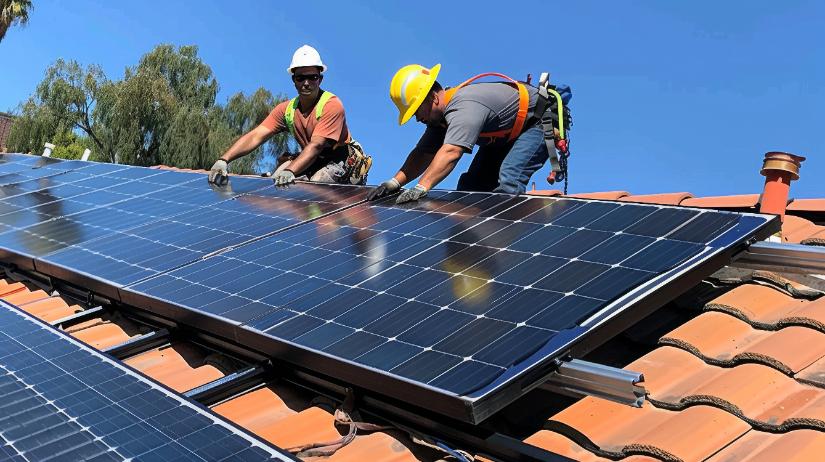How to boost the effectiveness of solar incentives
Solar incentives and policies could be more effective if they take into account a household's assets, rather than focusing solely on income, new research suggests.

Adobe Stock. By BazCam.
Solar incentives and policies could be more effective if they take into account a household's assets, rather than focusing solely on income, new research suggests.
Government support for the uptake of solar panels has the potential to transform energy use across millions of homes, helping to mitigate climate change, create a cleaner environment and reduce electricity bills.
However, households face significant barriers to adopting solar panels, especially when it comes to home ownership and the affordability of high upfront costs. Even high-income households may struggle with disposable income due to substantial mortgage payments.
The study, recently published in Energy Journal, was undertaken by Professor Martina Linnenluecke, Director of the Centre for Climate Risk and Resilience at the University of Technology Sydney (UTS) Business School and Dr Rohan Best and Associate Professor Mauricio Marrone from Macquarie Business School.
The meta-analysis summarises the findings of 234 studies on economic influences on solar-panel uptake, and finds that while income is frequently studied, its impact on solar panel adoption is mixed and context dependent.
Household wealth, such as homeownership, investments and savings, had a consistently positive influence on solar uptake, yet it remains under-researched. Of the studies analysed, only 22% included a capital variable.
“Income refers to the money flowing regularly into a household, such as wages or government benefits, which is then used to cover everyday expenses,” explains Professor Linnenluecke. “Wealth, on the other hand, includes assets like property, savings, and investments. These assets, in turn, allow households to make larger, one-off purchases such as solar panels.”
“A household with a modest income but substantial savings or property assets is in a much better position to afford the upfront costs of solar panels than a higher-income household that has little saved.
“It’s not just about having a monthly paycheque – upfront costs remain a major barrier for many households, and wealth, not income, is what determines a household’s capacity to make significant investments like solar panels,” she says.
The discussion around household solar panel adoption in Australia has centred on affordability for low-income households. Government schemes are typically designed to make solar more accessible to those on low incomes.
For example, New South Wales had a “Solar for low-income households” program (now closed). Eligible low-income households were entitled to access government energy rebate swaps. These swaps mean that a household had to give up the Low-Income Household Rebate for ten years in exchange for a free 3-kilowatt solar system.
If policymakers want to truly democratise solar power, they must design support mechanisms that consider a household’s total financial picture, including their assets, not just their income.
“Our findings suggest that by refocusing policy discussions on capital, rather than income alone, policymakers can more effectively target those who are genuinely unable to afford solar energy solutions. This would ensure that the benefits of renewable energy are available to a broader segment of society,” says Professor Linnenluecke.
“A more equitable approach that considers both income and wealth would not only help more households afford solar panels, but also ensure that the benefits of renewable energy are accessible to a broader segment of society.”
Policy options include redesigning solar incentive programs to account for both income and capital: means-testing based on assets or creating tiered support systems. Asset tests for welfare like the age pension provide an example of how financial assets can also be considered for solar panel subsidies, with some states starting to include this type of test.
There is also a need to substantially increase access to solar options for renters, says Professor Linnenluecke.
“European countries are leading the way. Renters can install solar panels on their balconies. More than 500,000 of these plug-in solar systems have been installed in Germany. Specific schemes for renters could also refer to wealth to determine subsidy availability,” she says.
“It is time for a broader, fairer approach to solar adoption. By focusing on wealth and assets in future policies, governments can create a more inclusive solar market, help reduce energy inequality and accelerate the transition to a more sustainable energy future for all Australians.”
